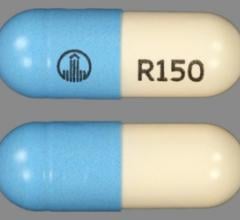
Photo courtesy of the American Heart Association
May 15, 2018 – Results of the AVIATOR 2 international registry data show a discrepancy between physician perception and objective assessment of stroke, stent thrombosis and bleeding risk in patients with atrial fibrillation (AF) undergoing percutaneous coronary intervention (PCI). The data was presented as late-breaking clinical science at the 2018 Society for Cardiovascular Angiography and Interventions (SCAI) Scientific Sessions.
The AVIATOR 2 is a multicenter prospective observational study of AF patients undergoing PCI in 11 international sites.[1] The use of a novel smartphone-based survey was used to capture physician and patient perspectives regarding antithrombotic therapies (ATT) after PCI.
AF is one of the most common abnormal heart arrhythmias that affects more than 2.7 million adults in the United States.[2] PCI is a nonsurgical procedure that improves blood flow to the heart by using a stent to open up blood vessels. Patients with AF undergoing PCI present a particular challenge for ATT selection. Finding the right balance that minimizes bleeding risk and maintains anti-ischemic efficacy remains a complex situation in these unique patients. In the era of novel antithrombotic therapy, the optimal ATT for patients with AF undergoing PCI is undetermined.
The choice of ATT was made by the physician. After PCI, physicians were asked to complete a survey to rate subjective stroke, ischemic risk and bleeding risk in patients. The survey was completed via a smartphone app called AVIATOR, which was developed at the Icahn School of Medicine at Mount Sinai. The calculated risk scores, including CHA2DS2, VASc, ST and HASBLED, were compared against physician rated risks.
A total of 515 patients with AF undergoing PCI were enrolled with a mean age of 73±10 years including 25.8 percent females. Safety (93.8 percent) and efficacy (89.9 percent) were the top two factors physicians reported as the most important factors when making the medication selection. In less than half (49.1 percent) of patients, the physician assessment showed an underestimation of risk in 26.9 percent and overestimation in 22.2 percent of patients when compared to the CHA2DS2VASc score. Physician assessment showed an overestimation of ischemic risk for ST in 71.5 percent and an underestimation in 4.6 percent for calculated ST scores. Overall, the assessment between the subjective physician assessed and objective risk scores for stroke, ischemic risk and bleeding varied.
“It is the first time we are collecting subjective risk assessment and comparing it with empiric calculations based on baseline characteristics and known risk calculators,” said lead author Roxana Mehran, M.D., director of interventional cardiovascular research and clinical trials at the Zena and Michael A. Weiner Cardiovascular Institute at Icahn School of Medicine at Mount Sinai in New York, N.Y. “It is also the first time we used a smartphone application to gain perspective from both the physicians and the patients. In today’s technological landscape, this type of accessible technology allows for the integration of the patient in decision-making and solidify the notion that patient concerns matter.”
The authors note that longitudinal follow-up will provide further insights on the correlation between risk estimation and cardiovascular events. The study was conducted by physicians from around the world, including Jaya Chandrasekhar, MBBS, MS, Usman Baber, M.D., MS, Melissa Aquino, MS, Birgit Vogel, M.D., Clayton Snyder, BS Samantha Sartori, Ph.D., Annapoorna Kini, M.D., George Dangas, M.D., Ph.D., and Davide Capodanno, M.D.
Complete listing of SCAI 2018 late-breaking trials with links to articles.
References:


 August 28, 2023
August 28, 2023 








